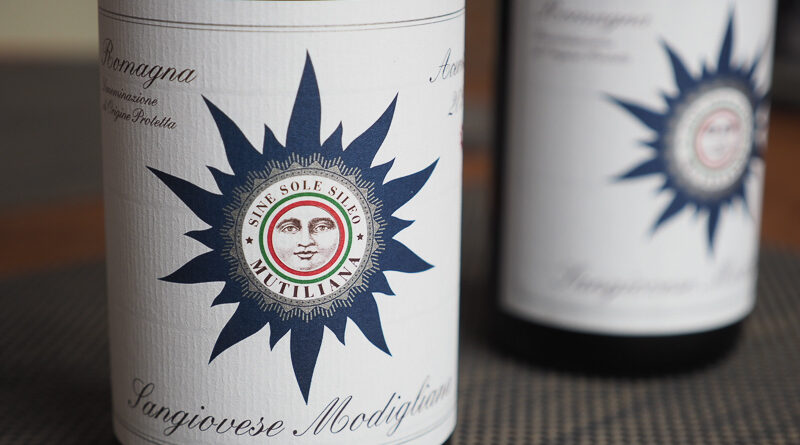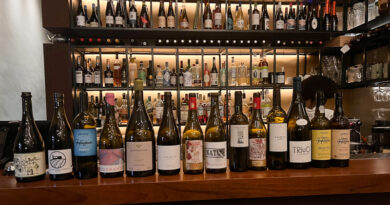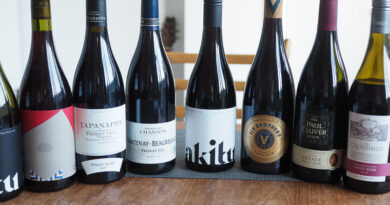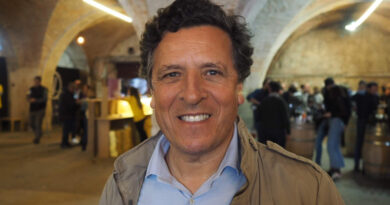Giorgio Melandri’s Mutililiana wines: Sangiovese thrives in Modigliana, Romagna
Modigliana, in Italy’s Romagna region, is producing Sangiovese like you have never tasted before. The Mutiliana wines of Giorgio Melandri show no oak, restrained fruit and a vibrant fresh dry perfumed character reflective of place. Giorgio describes a new generation of ‘postmodern’ Romagna-based winemakers who look to their Grandfathers for inspiration. He hates new oak, unnecessary technology and overripe fruit. His aim: to express the distinctive local terroirs of Modigliana. Lisse Garnett reports. Jamie Goode tastes.
Ten percent of Italy’s huge vineyard area is planted with Sangiovese and yet most of it isn’t very nice. Even iconic flagship greats are blended with French varieties, thanks to Italian law that allows ‘amelioration’. Wholesale change has been touted by a growing movement of winemakers who eschew international grapes, instead championing 100% Sangiovese or indigenous blends. They say the grape is misunderstood, that it’s fickle – needs the best sites on the poorest soils, low yields, nuanced or no oak and sensitive winemaking. Hugely influenced by the French natural wine movement, they are driven to create single vineyard low intervention wines that reflect the soils in which they are grown and the rich biodiversity that surrounds them.
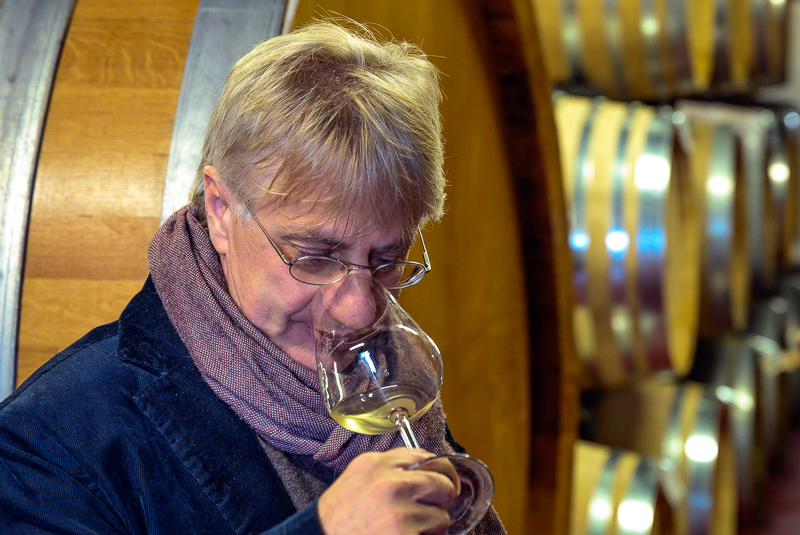
Leading this garrison is former food and wine journalist Giorgio Melandri of Modigliana in the Apennine foothills. He spent two decades tasting thousands of Italian wines and countless tonnes of food for infamous Italian food and wine guide, Gambero Rosso. So doing he recognised something very distinctive about the Sangiovese of his native Romagna – more specifically Modigliana. He could clearly read the soil in the wines. He describes a distinctive dry floral rather than fruity character and a fresh salty minerality. This inspired him to turn artisan and form his label Mutiliana.
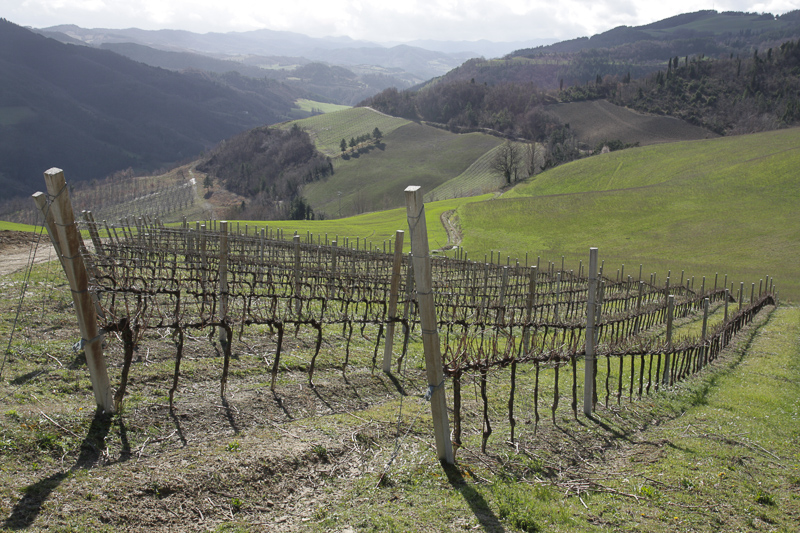
The flat plains of Romagna have traditionally produced fruit for bulk wines and Vermouth but up in the wooded Apennine hills that separate Romagna from Tuscany there are smaller plantations producing quality wines. It is here in Modigliana that Giorgio’s tiny focused team grow the Sangiovese for their three single vineyard wines. Only 6000 bottles of each are produced each year. A real passion project: Giorgio still keeps his wine consultant day job. Mutiliana are now a team of four.
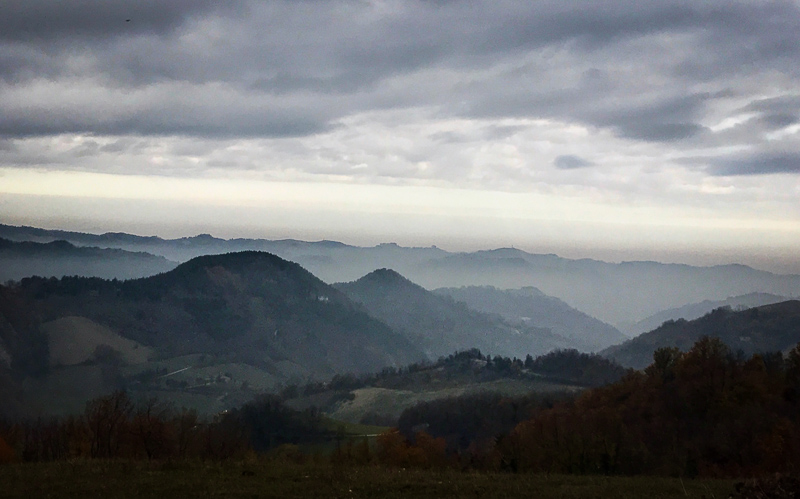
There are fifteen subzones defined by climate and soils in Romagna of which hilly Modigliana is one; the flatlands are predominantly clay. As the hills about Modigliana rise the clays make way for unusual changes in soil type, with one layer above the other thanks to tectonic activity. Altitude too plays its part. ‘Sangiovese has different answers in different soils,’ says Giorgio. ‘The place makes the fruit and the tannin.’ He says sandstone gives elegance and salinity, while chalk confers a floral perfumed quality. The most elevated soil is marl and sandstone and this makes fruity elegant wines with refined tannins, salinity and longevity. The surrounding woodlands play a huge part in maintaining biodiversity.
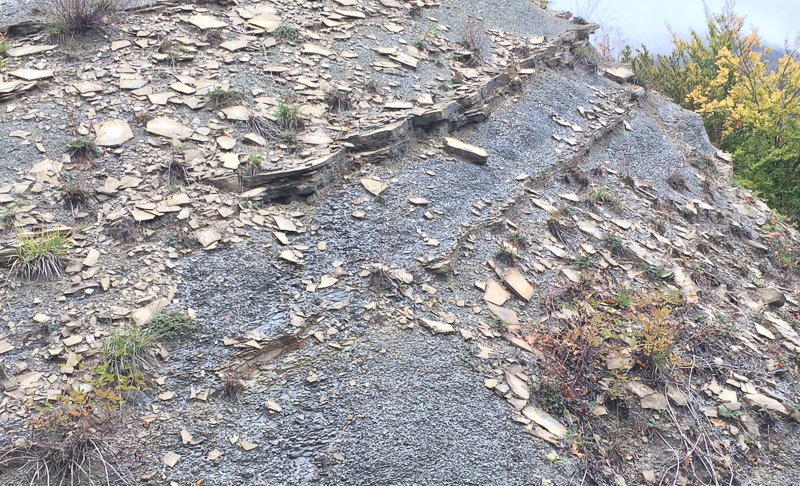
The three valleys of Modigliana feature in Giorgio’s wines: Ibbola, Tramazo and Acereta. Ibbola is the most elegant and austere, sandstone grown. Tramazo is grown on a mix of marl, sandstone and clay and is, he says, a wine of finesse and energy. Finally, Acereta offers a cool fruitiness and tight tannic structure and is grown on marl and sandstone.
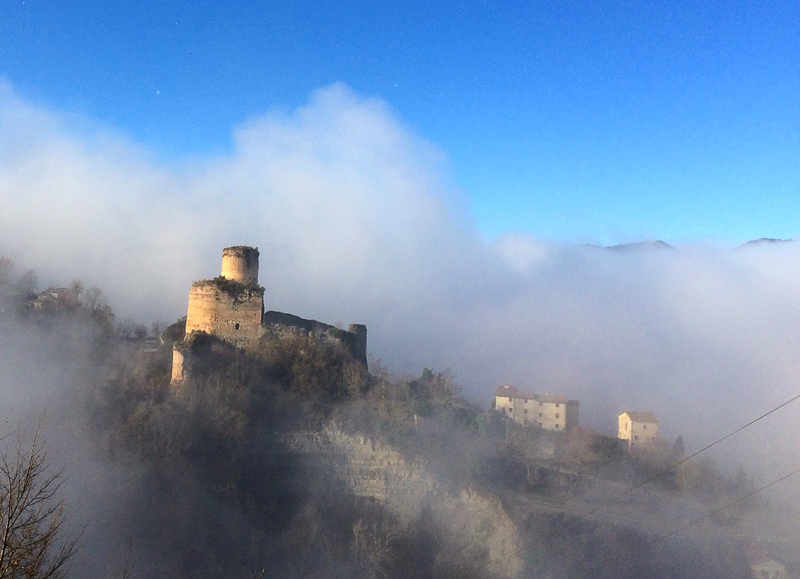
Romagna was off the radar when it came to Sangiovese until Giorgio and his collective started making noise. ‘Something special is happening in Italy,’ he says. ‘People are learning from their Grandfathers and are ignoring the more modern methods of their fathers.’ Tuscany is said to be the homeland of Sangiovese but Giorgio suggests the Apennines might be a better call. A salt route from Faenza to Firenze probably served to distribute this precious cargo throughout the region. Local monasteries too might have played their part as the monks here were winemakers and loved to blend. The Stella dell’Appennino is a collective of eleven makers, Mutiliana being one. Much like VIGNO in Chile, Stella dell’Appennino decided to unify and promote their unique terroir before their names. They say there is a common language in their wines too.

THE WINES
Notes by Jamie Goode
Mutiliana Ecce Draco Forlì Pinot Nero 2016
Cedary, spicy, savoury cherry fruit on the nose. It’s quite taut and restrained with some herbal notes and a touch of silage. The palate is savoury and focused with some grip, and then some sweet cherry and kirsch following through, and finishing with a cherry flourish. Finishes quite dry and a little angular. 90/100

Mutiliana Ibbola Sangiovese Modigliana 2016 Romagna, Italy
13.5% alcohol. This is an exceptional Sangiovese that has a lot more fruit than most examples. It’s smooth and luxurious with ripe liqueur-like cherry and berry fruits, some nice texture, and astonishing purity and drinkability. There’s some structure under the fruit, for sure, but it’s just so lovely to have such smoothness, purity and fruit in a Sangiovese. There’s substantial structure, but it’s cloaked by the lovely blackcurrant and cherry fruit, with a hint of olive, fruit purity, and freshness. 94/100
Mutiliana Acereta Sangiovese Modigliana 2016 Romagna, Italy
13% alcohol. This is rounded and textural, but also savoury and intense with firm tannins under some sweet red cherry and berry fruit. It has some floral notes and a hint of tar, but also some dry dusty tannins on the finish. Overall, though, it has an almost Pinot-like finesse to it. It is felt in the mouth right in the middle, while the Ibbola is all around the edges. 94/100
UK agent: Indigo Wines
Find these wines with wine-searcher.com

